Scratching is an innate behavior in cats, a habit ingrained in their feline DNA. But when that natural instinct wreaks havoc on your favorite furniture, it's time to redirect your feline friend's attention toward a better option - a scratching post.
But how exactly do you convince a cat to use a scratching post instead of your precious sofa? In this article, we lay out 23 powerful tips to guide your cat toward healthier scratching habits.
From understanding the motivations behind their actions to creating an enticing scratching environment, these strategies will keep your cat's claws happily occupied while sparing your furniture.
With patience, empathy, and these insightful tips, you'll make the scratching post your cat's go-to spot for those irresistible clawing sessions. Now, let's get scratching - in the right way!
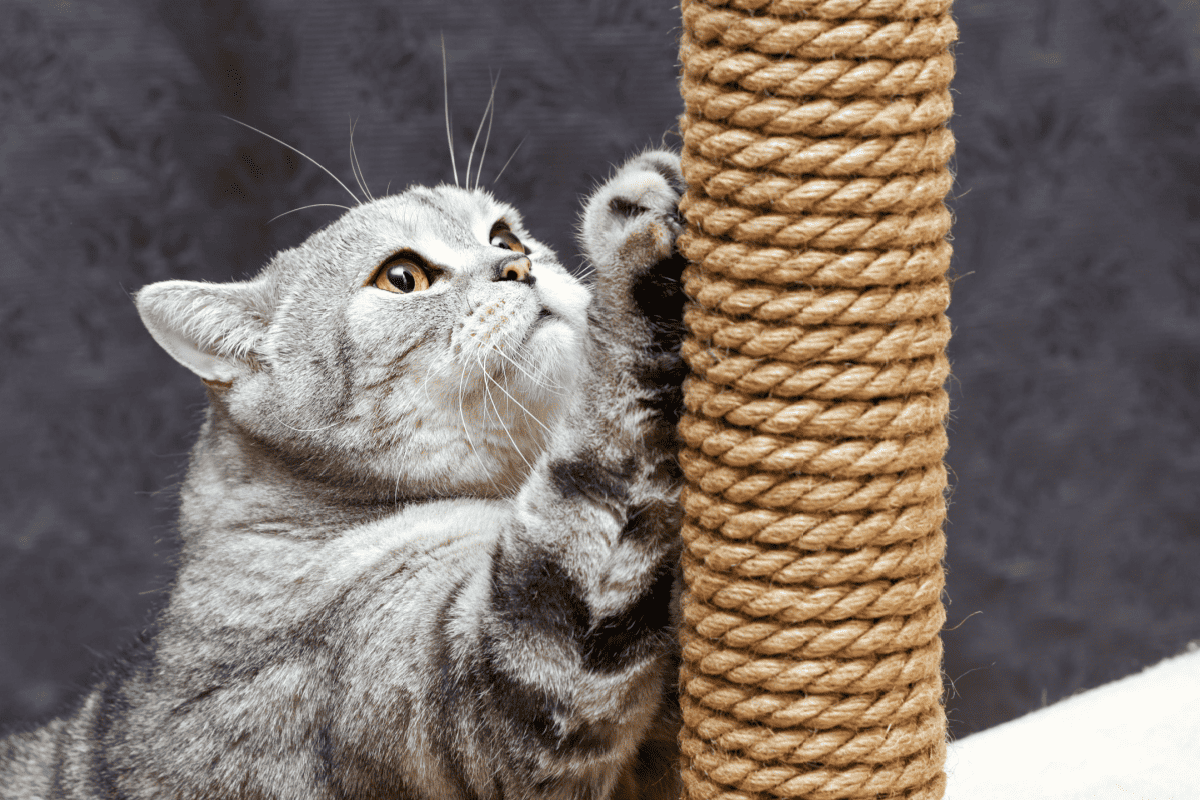
Offer Your Cat A Better Alternative To Scratching Furniture
Before we dive right into the tips, here are a few words about how the concept works.
The key here is to recognize the cat’s natural need and provide her with a solution in the form of a very good scratching post.
Before you begin teaching her not to scratch the couch or carpets, you must first work with her on forming a new and healthy habit of clawing at designated scratching posts.
Your focus should be on making the scratching post super appealing. Once your cat uses the scratchers regularly, then - and only then - can you begin teaching her to avoid other places.
Don’t rush the process, and don’t try to prevent your cat from clawing the furniture before she regularly uses her scratching post.
Now that we have the concept all laid out, let’s dive right into the 23 tips!
1. The Mystery Behind Your Cat's Scratching Furniture: The Reasons Cats Scratch
Every cat, from your housecat to the big cats in the wild, has a natural instinct to scratch. What's the motive behind this? Let's dig deeper into why your cat can't resist that scratching urge.
So why do cats claw at things?
Experts believe cats scratch surfaces for several reasons:
- Marking the cat’s territory by leaving visual marks as well as secret scents that only other cats can smell.
- Maintaining the health of the nail by removing external layers
- Exercising the cat’s muscles and stretching them properly
- Relieving stress
Scratching, thus, is a multifaceted behavior. When you're implementing the tips shared later, remember to account for your cat's instinctive motives to scratch.
2. Cultivate Good Habits Early On: Start Young
The sooner you start teaching your kitten the right places to scratch, the easier it'll be for them to form habits. While it's never too late to teach an old cat new tricks, a kitten's adaptable brain makes the process smoother.
If you've just brought home an adult cat, take advantage of their unfamiliarity with their new surroundings. They've yet to develop preferences for where to scratch in your home.
Set up suitable scratching posts right from the start and increase your chances of steering their scratching behavior in the right direction.
3. Variety Is The Spice Of Cat Life: Offer Multiple Scratching Posts
Your cat would like to claim the entire territory as her own, so you will need to have scratching posts in several places (more on location in a minute).
Moreover, having multiple scratching posts allows you to experiment with the types of posts and see which ones she likes best.
4. A No-Force Policy: Never Force A Cat To Use A Scratching Post
While introducing a new scratching post, resist the temptation to guide your cat's paws to it. Cats dislike being manipulated against their will.
Instead of learning to love the post, they might end up fearing it.
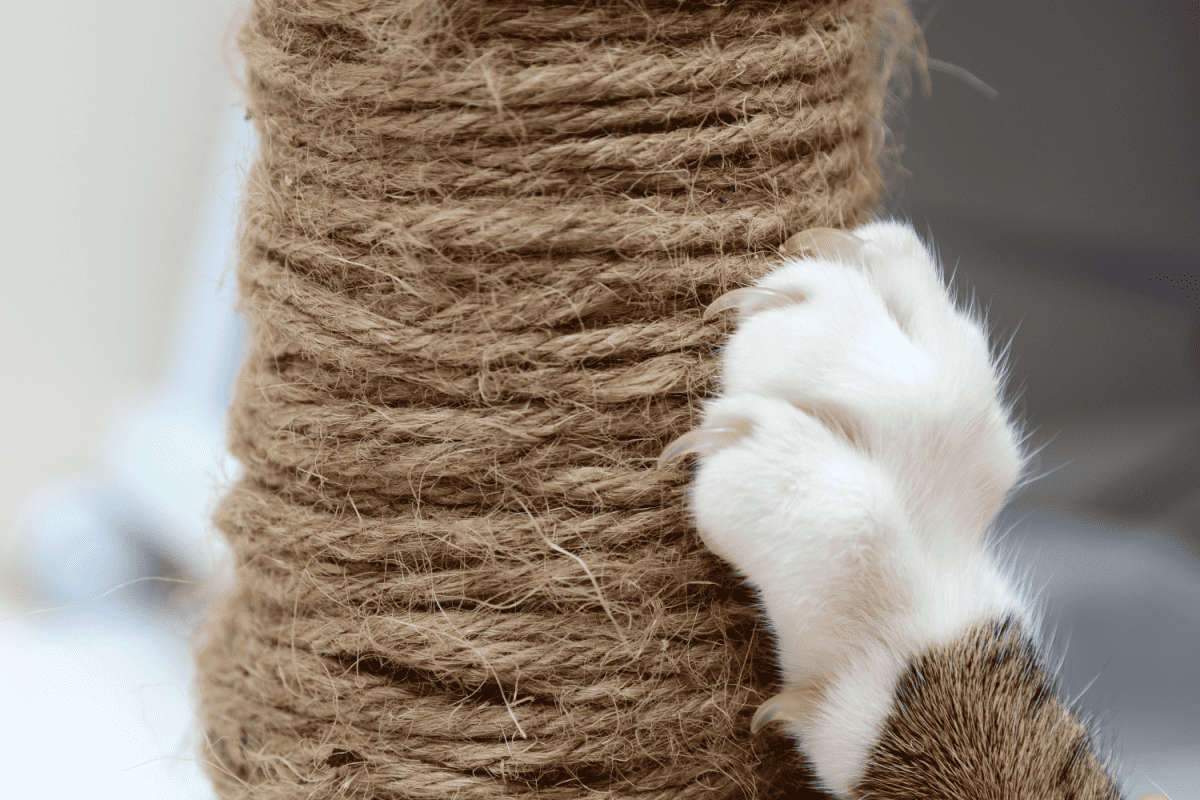
How To Choose The Perfect Scratching Post
5. Use Large Scratching Posts
Cats almost always prefer to scratch big surfaces - which means large scratching posts.
When scratching an object, the typical cat creates a visual mark that’s about 10 inches long. You should leave some space on both ends of the actual scratched area, so opt for a total of 20-30 inches of open scratching surface on your posts.
And don't forget stretching! The entire length of the post should be enough for your cat to stretch across in comfort. A shorter post is likely to be ignored.
6. Make Sure All Scratching Posts Are Stable
Do you know what a tiger’s “scratching posts” would be in the wild? Trees. Tigers and other large felines mark their territory by scratching the bark of large trees in their environment. They choose trees because trees are large, stable, and permanent.
The scratchers that you offer at home don’t have to be actual trees, but they should be as stable as a tree.
Nothing is more off-putting to a cat than reaching out for a good long “stretch & scratch” only to hit a wobbly surface that could topple any second.
7. Find Out Whether Your Cat Prefers A Vertical Or Horizontal Scratching Surface
While most cats seem to prefer vertical scratching posts - at least judging by their availability in stores - some go for horizontal surfaces instead.
This becomes clear once you read enough complaints in our forums about inappropriate scratching.
Some cats prefer to leave their mark on the side of a couch, while others are just crazy about carpets. Preferably those in a rented apartment…
So, how can you tell whether your cat prefers a horizontal or vertical surface?
Simply offer both options side by side. Choose the same location (because the location does matter) and place two scratchers there, one by the other.
Both scratchers should be large and stable - with the only difference being in how the scratching surface is positioned. You’ll soon see which direction your cat prefers.
8. Experiment With Textures
Just like a preference in direction, cats also have different tastes when it comes to texture. Most cats prefer a rough surface, like sisal or cardboard. Some prefer something more delicate, like soft fabric.
Since we can’t ask our cats in words, the solution is once more to offer the cat a choice. You’ll soon learn what your cat prefers.
9. Replace The Scratching Surface As May Be Necessary
Whatever your cat’s preferred texture is, make sure the post delivers it down the road. Clearly, clawing at a surface will damage it - that’s why we don’t want our cats to scratch the furniture. Given enough scratching, even the strongest sisal rope will eventually give out and peel off.
Keep an eye on the scratcher and if you think it’s showing too much wear and tear, consider adding a new scratching post next to the old one so that Kitty can easily make the transition.
10. Try A Scratching Area That The Cat Can Stand On
Does your cat use the carpet instead of the fancy horizontal scratching post? Try a larger scratching post. Find - or build - a horizontal scratching post that’s large enough for the cat to stand on.
Think about what the carpet actually offers her - maximum stability and the opportunity to stretch to her full length. The scratching post should offer the same.
SIGN UP FOR THECATSITE'S EMAIL UPDATES >
11. Invest In A Large Cat Tree
Cat trees are large pieces of furniture that offer room for play and rest. Get a cat tree with designated scratching surfaces as well - or which just has varied enticing textures.
Make sure that the tree is stable and large enough and you just might get a piece of furniture that doubles as Kitty’s favorite new scratching post.
See This Cat Tree On Amazon Here
Optimizing Your Home For Your Cat's Scratching Needs
12. Keep Scratching Posts Away From The Litter Boxes
Keep scratching posts away from litter boxes, since cats prefer to hide their presence near their waste. Central living areas make ideal locations for scratching posts, as cats like to mark high-traffic areas of their territory.
Also, place a scratching post near your cat's favorite sleeping spot. They often like to stretch and scratch upon waking up.
Finally, try placing a scratching post near your front door. This location provides an outlet for their excitement when you arrive home.
13. Place A Scratching Post In The Central Living Area
Many new owners make the mistake of shoving a great scratching post in the garage or some other peripheral location. They expect Kitty to go all the way there to sharpen her claws, but that’s just not going to happen.
Now that you know that scratching is also a form of territorial marking, it just makes sense that your cat needs to carry out the action in a central location.
That’s why cats prefer to claw at the living room furniture - why not mark such an important part of their territory?
So, once you choose a great scratching post, make sure you place it in a great location - a place that is central to your home and to your cat’s territory.
14. Keep A Scratching Post Next To Kitty’s Favorite Napping Spot
Another great location for a scratching post (you should have multiple ones, remember?) is next to your cat’s napping spots.
Scratching is often accompanied by stretching. Cats - just like us - prefer to stretch when they wake up from a nap. Stretching triggers the scratching behavior - so your cat should be able to find a designated scratching post when that happens.
15. Try Adding A Scratching Post Where Your Cat Meets And Greets You
As mentioned earlier, scratching also offers stress relief. That means cats tend to engage in the behavior when they are excited. And one of the most exciting moments of a cat’s day could be when you come through the door!
So for many cat owners, placing a cat scratcher near the door makes sense.
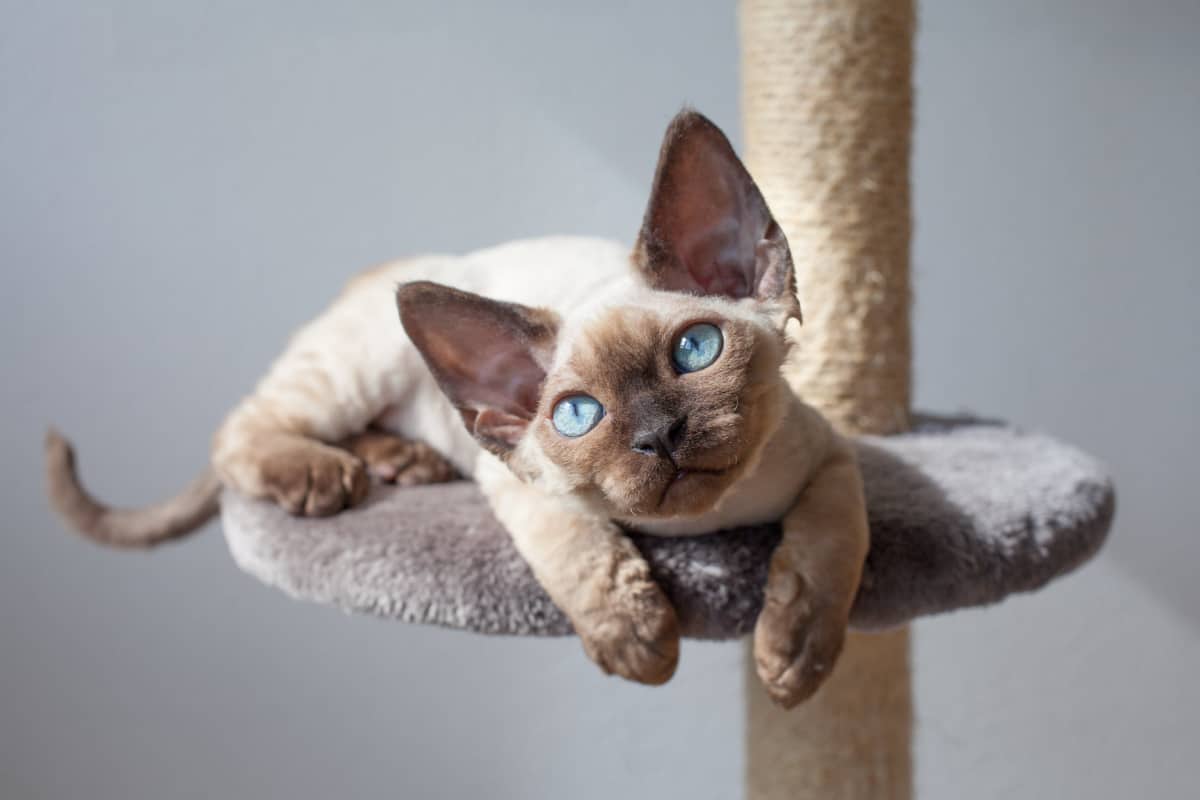
16. Find The Exact Spot That Your Cat Already Uses As A Scratching Post
Our final tip for location is to follow your cat’s instincts. If you’re reading this, chances are that your cat is scratching the furniture somewhere around your house - and you’re not happy with that.
Your cat knows where she wants to scratch. And that’s where you need to offer a large and stable scratching post.
How To Help Your Cat Find And Use A New Scratching Post
We've already mentioned that you shouldn't force a cat to use a post by placing her claws on it. Here are a few tips for making the introductions more positive.
17. Play With Your Cat Near And Around The Scratching Post
A better way to entice a cat to use the scratching post is to play with her around it. Use a rod-like cat toy that allows you to direct Kitty’s attention in a positive way.
Move the toy at the end of the rod near - and eventually on - the scratching area.
The idea here is to get the cat to pounce at the toy in a way that makes her paw touch the scratching surface. This simply lets her experience the new texture.
Hopefully, she’ll return again later for further inspection - and clawing.
See This Rod Cat Toy On Amazon Here
18. Use Catnip To Draw Your Cat To The Scratching Post
If your cat responds to catnip, try to sprinkle some dry catnip or spray the scratching post with catnip spray.
For some cats, this makes the scratching post nearly irresistible. Once they form the positive association and begin to regularly scratch the post, there’s no need to continue adding the catnip, although you can, if you want to.
See This Dry Catnip On Amazon Here
19. Try Feliway Spray To Attract The Cat To The Scratching Post
Feliway is a spray that acts as an attractant, appealing to the cat by mimicking the “invisible” scent of feline pheromones, as well as the visual signs of scratching.
The manufacturer suggests applying this spray daily during the first week and then repeating it at weekly intervals.
Preventing Your Cat From Scratching Furniture
20. Be Careful About How You Say No
Most cats don’t respond well to negative reinforcement. You should never punish your cat - including by not spraying water.
In many cases, even scolding loudly can stress out a cat. That’s why shouting “no” at a cat when she’s scratching the couch could backfire.
More on how to train a cat without punishment.
21. Cover The Furniture With Double-Sided Tape.
Instead of reprimanding Kitty, block access to her favorite - yet undesirable to you - scratching areas. The easiest and most effective way to do this is by covering these places with double-sided sticky tape.
Cats don’t like to touch a sticky surface (who does?) so your cat is likely to turn away once she finds out the couch isn’t fun to scratch anymore.
If you also provided her with enough quality scratching posts which she’s already using, it shouldn’t take long before she forgets about the couch. At that point, you’ll be able to remove the tape.
It’s best to test the effect of the tape on the fabric in a hidden area first. Or you could invest in a special product like Panther Armor or Sticky Paws [Amazon links] that promises to take better care of your furniture.
22. Spray The Furniture With Repellent
If you hate the thought of making your couch all sticky, then spraying with pet repellent may be a better solution.
There are two things you need to keep in mind here though -
- You must choose a pet-safe product. Avoid homemade solutions like essential oils which can be safe for people yet toxic to cats.
- Not all cats react to scent-based deterrents. Test to see if yours does - and then try a different brand if she doesn’t.
23. Consider Claw Caps
Finally, if all else fails, you could try covering Kitty's claws with special plastic caps.
Depending on Kitty’s temperament, you may or may not be able to get the caps fitted properly on her claws.
If you’re having difficulty, you can ask your veterinarian to help out. Just keep in mind that you’ll have to reapply caps every several weeks, so this could end up being an expensive solution.
See These Claw Caps On Amazon Here
Avoid Declawing
Whatever you do - please never declaw your cat.
Declawing is an extremely painful procedure that involves the amputation of your cat’s toes. In fact, declawing was made illegal in most countries, and for a good reason.
Even if it’s still legal where you live, it’s cruel and should not be practiced.
Hopefully, this article helps by giving you ideas on how to get a cat to use the scratching post - and avoid scratching furniture and carpets.
Please share it around so other cat owners can learn about humane behavioral solutions to inappropriate scratching. Here's a pin to help you share on Pinterest -
And if you have your own tips to share - we’d love to hear all about them! Just add them in a comment below - thank you!
SIGN UP FOR THECATSITE'S EMAIL UPDATES >

Note: We may get commissions for purchases made through links on this page.







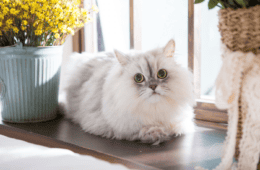

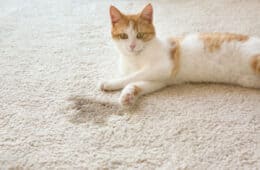
23 comments on “23 Proven Ways To Stop A Cat From Scratching Furniture”